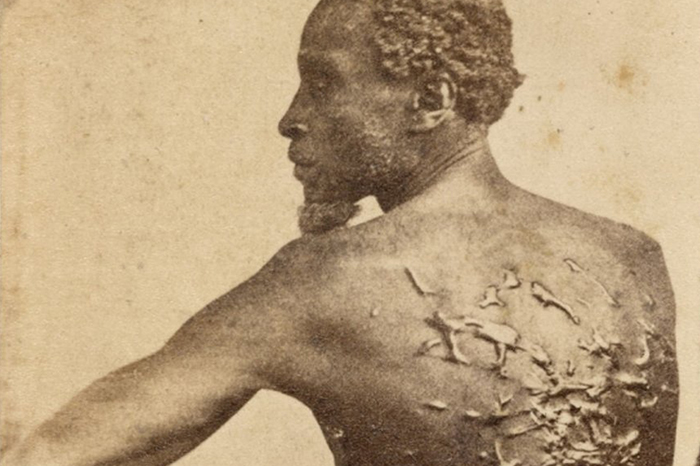「あなたの弟の血が土の中から私に向かって叫んでいる」(創世記4:10)
私たち「クリスチャニティー・トゥデイ」は教会を深く愛している。私たちの活動の中心は、キリストの花嫁である教会に仕え、教会が抱く神への愛をはぐくみ、和解と変革を働きかける数々の物語を世に知らせることだ。
教会の罪深い歴史を見るとき、私たちは心苦しい思いになる。しかし、私たちが真実を伝えないのであれば、兄弟姉妹を愛していることにはならない。そして、「私たちもまたその一翼を担った」と告白できないなら、真実を伝えているとは言えない。聖書は「素晴らしい人にも欠陥がある」と率直に伝えている。私たちも聖書に倣(なら)うべきだ。
[toggle]We at Christianity Today deeply love the church. Serving the bride of Christ, growing her love for God, and telling the story of her redemptive and transformative work in the world is the heart of what we do. We do not revel in the history of her sin. But we cannot love our brothers and sisters well if we cannot tell their story in truth. And we cannot tell their story in truth if we cannot confess our participation in it. The Bible is honest about the flaws of even the most remarkable people. We should follow its example. [/toggle]米国は建国以来、二つの罪に悩まされてきた。「原住民の殺戮(さつりく)」と「奴隷制」だ。どちらも人種の平等に対する意識のなさから生まれた失敗だ。
クロード・アレクサンダー司教の言葉を使えば、「人種差別は、私たちの国をはぐくんだ羊水に含まれていた」。私たちの国、文化、そして発展をはぐくむその環境のただ中に、この悪は存在してきた。そして、私たちの教会、憲法、法律、私たちの態度とイデオロギーは常に人種差別に冒されてきたのだ。私たちが人種差別を駆逐できたことなど、これまでに一度もない。
[toggle]Two original sins have plagued this nation from its inception: the destruction of its native inhabitants and the institution of slavery. Both sprang from a failure to see an equal in the racial other. As Bishop Claude Alexander has said, racism was in the amniotic fluid out of which our nation was born. There was a virus present in the very environment that nurtured the development of our country, our culture, and our people. The virus of racism infected our church, our Constitution and laws, our attitudes and ideologies. We have never fully defeated it. [/toggle]
黒人奴隷の鞭打ちの痕(写真:Mathew Brady)
最初の奴隷が米国の海岸に到着したのは、ピルグリム・ファーザーズ(メイフラワー号に乗ったピューリタンたち)の到着よりも先のこと、まだマサチューセッツ州もコネチカット州も存在していなかった頃だ。奴隷制が始まったのは、ジョージ・ワシントン(初代大統領)出生よりも113年前、独立宣言よりも157年前だ。
米国最初期の大統領のうち9人は奴隷を所有していた。当時、奴隷制によって数えきれないほどの夫婦や親子がバラバラに引き裂かれ、二度と会うこともできず、また何十万もの黒人の少女や女性たちが白人男性によって繰り返しレイプされてきた。
[toggle]The first slaves arrived upon these shores before the Pilgrims, before there was a Massachusetts or Connecticut. Slavery had been established for 113 years when George Washington was born and 157 years when the Declaration of Independence was written. Nine of our early presidents were slaveholders. Slavery meant husbands and wives, parents and children were violently torn apart and never saw one another again. It meant white men repeatedly raped hundreds of thousands of black girls and women. [/toggle]広範囲にわたる調査を行ったセオドア・ウェルドとアンジェリーナ・グリムケにより1839年に著された『アメリカ奴隷の真実』では、奴隷について次のように書かれている。
[toggle]American Slavery As It Is, published in 1839 with extensive sourcing by Theodore Weld and Angelina Grimké, writes that[/toggle]奴隷たちは無残なほどに鞭(むち)打たれ、さらに痛みを感じさせるため、裂けた肉に唐辛子や熱い塩水、テレビン油などが塗り込まれた。また裸にさせられ、ナイフで背中や手足を切り刻まれ、平たい棒で数百回もめった打ちにされ、体をアザや傷だらけにされることもしばしばだった……。
猟犬や猟銃の標的代わりにされたり、犬にバラバラに食い殺されることも多くあった。ほかにも、腕を縛って吊り下げられ、気絶するまで鞭などで打たれ、気つけ薬によって目を覚まされると、また気絶するまで、あるいは死ぬまで殴打され続けることもあった。耳を切り落とされ、目が飛び出るまで殴られ、骨を砕かれ、赤く熱された鉄で肉を焼かれた。時間をかけて小さな火であぶられたり、体の部位を切断されたりすることもあった。
[toggle]slaves: are frequently flogged with terrible severity, have red pepper rubbed into their lacerated flesh, and hot brine, spirits of turpentine, etc., poured over the gashes to increase the torture; that they are often stripped naked, their backs and limbs cut with knives, bruised and mangled by scores and hundreds of blows with the paddle…that they are often hunted with blood hounds and shot down like beasts, or torn in pieces by dogs; that they are often suspended by the arms and whipped and beaten till they faint, and when revived by restoratives, beaten again till they faint, and sometimes till they die; that their ears are often cut off, their eyes knocked out, their bones broken, their flesh branded with red hot irons; that they are maimed, mutilated and burned to death over slow fires. [/toggle]
これがアメリカで250年近く行われてきたことだ。肉体的苦痛だけではない。奴隷制を形作り、屈辱を与え、そのことを無視し続けた白人社会は、奴隷たちを「愛するに値する存在」とは見なさず、その叫びに耳を貸そうともしなかった。そのことを考えるだけでも怖ろしさに震え上がるような思いがする。そのような恐怖が民族としての集団意識に与えた傷はどれだけ深いものだっただろう。
わが国の歴史において、南北戦争前の奴隷制は、国の経済に大いなる富をもたらした強力な原動力だった。奴隷制はこの国の文化や経済を支え、コミュニティーを豊かにし、労働や投資、教育の機会を生み、やがては技術開発や発明、生活の向上を招くことになった。しかし、それはアフリカ系米国人たちをひどい環境下に置き去りにするものだった。
[toggle]This is the institution that endured on American soil for nearly 250 years. We shudder when we think not only of the physical torment but of the social suffering—the sense of humiliation and abandonment, that the white society around the slaves was often deaf to their cries and did not view them as human and worthy of love—and we wonder at the profound wound it would leave in the collective consciousness of a people. Slavery in the antebellum economy was one of the most powerful engines of wealth creation in the history of our people. It generated economic and cultural capital that flowed downstream into affluent communities, as well as opportunity for labor and investment and educational institutions that supported research, innovation, and quality of life. Yet it left African Americans utterly desolate. [/toggle]「奴隷制の歴史が現代のアフリカ系米国人に影響を与え続けている」と信じているのは、白人クリスチャンのうち約42%だけだ。しかし奴隷制は、ウイルス自体ではなく、ウイルスによってもたらされる症状の一つだといえる。奴隷制を支え、形成してきたイデオロギーは、奴隷制が廃止された後も存続してきた。症状は緩和したが、ウイルスは形を変えて存在し続けたのだ。
[toggle]Only about 42 percent of white Christians believe the history of slavery continues to impact African Americans today. Yet slavery was a symptom of the virus, not the virus itself. Even after the abolition of slavery, the ideology that had supported and formed around slavery endured. The symptom passed. The virus persisted by mutating. [/toggle]南北戦争が終わって奴隷制が崩壊し、新たにジム・クロウ法(南部諸州にあった人種差別的な法律)が制定されたことで、米国南部では人種隔離と抑圧が1965年まで続いた。戦後も依然として安価な労働力を必要としていたプランテーションの所有者たちは、(黒人の)小作人たちを搾取し、残酷な扱いを続けた。こういった私刑(リンチ)によって、黒人家族は恐怖の縄に縛られ、支配と統制が強化されていった。そして南部の政治家たちは、それまで以上にさまざまな手段を使って、黒人が投票をしたり、自らの命や財産を守ることを難しくさせてきた。
多くの人が抑圧から逃げて南部から移り住んだ北部でも同じように、工場などで仕事を求める黒人に対する社会構造的差別は存在していた。特に就職や不動産の分野でその差別は明確であり、アフリカ系米国人が建物を所有し、子孫に遺産を遺(のこ)すことはまず不可能だった。
[toggle]The collapse of Reconstruction and the rise of Jim Crow imposed racial segregation and oppression in the South until 1965. Since plantation owners still needed cheap labor after the Civil War, they exploited their sharecroppers and tenant farmers and often treated them just as brutally as they had before. Lynchings terrorized black families and enforced a regime of domination and control, while southern legislators found ever more creative ways of preventing blacks from voting or defending themselves and their property. In the North as well, especially as great numbers of blacks fled the oppression of the South and sought work in factories in northern cities, systematic discrimination in the housing and labor markets made it virtually impossible for African Americans to finance home ownership and build generational wealth. [/toggle]多くの進歩的な政策が行われてきたが、それは黒人と白人の間に存在する社会的・経済的格差を深めるだけだった。ニューディール時代の社会保障法は、連邦政府の退職金支援から事実上ほとんどの黒人を除外し、復員兵援護法は住宅購入にはまったく効果がなく、戦争から戻った黒人退役軍人に与えられるわずかな支援金では、大学など高度教育を受けることはほとんどできなかった。
こういった政策や偏見によって、黒人たちは貧困から抜け出せない地域に追いやられ、そこから抜け出すことができたのはほんの一握りだけだった。若者たちは、失業や崩壊した家庭環境、依存症、そして絶望に取り囲まれ、暴力の中で育ち、質の高い教育や家庭環境、まともな雇用の機会にあずかることはできなかった。こういったことがすべて、20世紀後半に起こった米国刑事司法制度の崩壊、行き過ぎた逮捕と投獄、警察と地域住民の間の暴力的衝突へとつながったことは言うまでもない。
[toggle]Many progressive policies only deepened the social and economic divide between blacks and whites. Social security laws in the New Deal era effectively excluded the vast majority of blacks from federal retirement assistance, and the GI Bill was thoroughly ineffective at supporting home ownership and only meagerly effective at funding college education for black veterans returning from war. As a matter of policy as well as prejudice, blacks were forced into neighborhoods of ever-deepening poverty, and very few could climb their way out. Young people growing up in proximity to violent crime, surrounded by joblessness, family breakdown, addiction, and despair, could not secure a quality education, a home, or a fair shake in the job market. All this is to say nothing of the collapse of the American criminal justice system in the second half of the 20th century, which led to over-incarceration and increasingly violent clashes between law enforcement departments and the communities they serve. [/toggle]より詳しい事情を語る人たちの話を「クリスチャニティー・トゥデイ」が伝え続けることは重要だと私たちは信じている。その話によって分かるのは、悲劇的な経済格差の全体像だ。
現代米国の黒人家族が所有する純資産の中央値は、白人家族の純資産の中央値の約10分の1。1955年から70年の間に生まれた黒人の62%は貧困地域で育ち、85年から2000年の間にそれは66%まで悪化している。一方、貧困地域で育った白人は6%だ。
[toggle]Others have told this story in greater detail. We believe it is important to keep telling it in the pages of Christianity Today. The result of the story is a catastrophic wealth gap: The median net worth of black families in the United States today is one-tenth the median net worth of white families. Sixty-two percent of black children born between 1955 and 1970 were raised in poor neighborhoods, compared to 4 percent of white children. Results for the generation born between 1985 and 2000 were even worse, with 66 percent of black children raised in poor neighborhoods compared to 6 percent of white children. [/toggle]このような数字が生まれた背景を説明するのは、次のことしかない。人種的偏見は相変わらず持続され、政府によって固定化されていたのだ。ここでウェンディー・ドニガーという学者のたとえを一つ紹介したい(本人の意図とは異なるだろうが)。
二人の探検家が、巧妙にクモの巣が張り巡らされた洞窟に入った。探検家の一人は「クモが見えないから」とクモの存在を信じようとしない。そこでもう一人が「でも、巣が見えるじゃないか」と答えた。巣が暗示するのはクモの存在なのだ。
400年にわたって黒人たちを抑圧してきた政策や慣行、不平等、虐待が暗示するのは、人種的偏見というクモなのだ。(後編に続く)
[toggle]The only way to explain the story above is the persistence of racial prejudice and its enshrinement into the apparatus of government. Allow me to borrow (but use in a different way) a metaphor from the scholar Wendy Doniger. Two explorers enter a cave filled with the most elaborate spiderwebs. One of them cannot locate a spider, and thus refuses to believe it exists. You see the webs, replies the other. The spider is implied. Racial prejudice is the implied spider that has woven the web of policies and practices, inequalities and abuses that have constrained black Americans now for four hundred years. [/toggle]